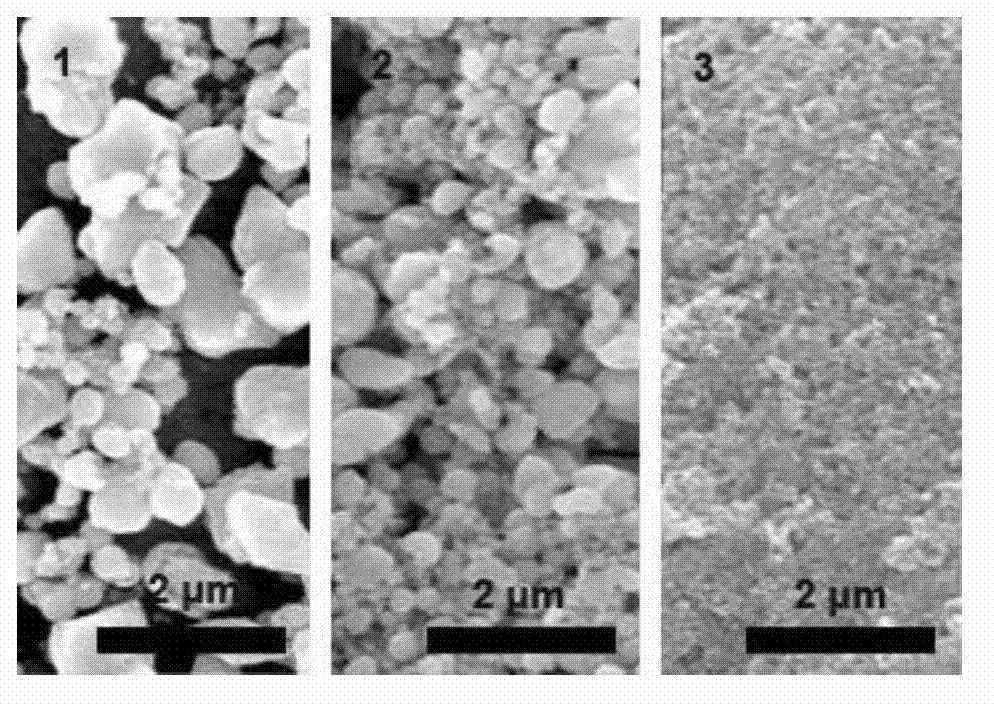Method for preparing ordered mesoporous metal oxide material with adjustable particle size
A particle size, oxide technology, used in chemical instruments and methods, iron oxides, carbon compounds, etc., can solve problems such as limited effectiveness, and achieve the effect of improving application performance, simple operation, and easy implementation.
- Summary
- Abstract
- Description
- Claims
- Application Information
AI Technical Summary
Problems solved by technology
Method used
Image
Examples
preparation example Construction
[0021] Below according to existing preparation method, in conjunction with our invention, the present invention is described in further detail:
[0022] A method for preparing an ordered mesoporous metal oxide material with adjustable particle size, comprising the following steps:
[0023] 1) Preparation of ordered mesoporous silica template material: Mix and stir the surfactant, water, butanol and hydrochloric acid until the surfactant dissolves, then add ethyl orthosilicate and stir at 25-35°C for 12-24 hours , and then transfer the mixture to a hydrothermal reaction kettle for 1-4 days at 100-130°C, then filter, wash, dry and calcinate at 350-600°C for 2-5 hours in an air atmosphere to remove the surfactant after natural cooling Obtain a white powder sample for subsequent use;
[0024] The surfactant is a triblock copolymer P123 (OH (CH 2 CH 2 O) 20 (CH 2 CH(CH 3 )O) 70 (CH 2 CH 2 O) 20 H,MW=5800);
[0025] The molar ratio of tetraethyl orthosilicate, P123, hydro...
Embodiment 1
[0031] Example 1, by controlling the volume of the calcined container (the volume of the container is from 1.5ml to 20ml to 700ml), the prepared ordered mesoporous Fe 2 o 3 The particle size of the material.
[0032] 6g of surfactant P123, 217g of water, 6g of butanol and 11.8g of hydrochloric acid (35% concentration) were mixed and stirred until the surfactant was dissolved, then 12.9g of orthosilicate was added and stirred at 35°C for 12 hours, then the The mixture was transferred to a hydrothermal reactor at 120°C for 1 day, and after natural cooling, it was filtered, washed, dried, and calcined at 400°C for 3 hours in an air atmosphere to remove the surfactant to obtain a white powder ordered mesoporous silica for future use. ;
[0033] Use 3g of the above-mentioned ordered mesoporous silica as a hard template, disperse it into 60g of ethanol, add 9g of ferric nitrate, stir and impregnate at room temperature, so that the iron precursor is immersed in the mesoporous pores...
Embodiment 2
[0034] Example 2, by controlling the opening size of the calcined container (from completely closed, to 50% open to fully open), the prepared ordered mesoporous In 2 o 3 The particle size of the material.
[0035] 6g of surfactant P123, 217g of water, 6g of butanol and 11.8g of hydrochloric acid (35% concentration) were mixed and stirred until the surfactant was dissolved, then 12.9g of orthosilicate was added and stirred at 35°C for 12 hours, then the The mixture was transferred to a hydrothermal reactor at 120°C for 1 day, and after natural cooling, it was filtered, washed, dried, and calcined at 400°C for 3 hours in an air atmosphere to remove the surfactant to obtain a white powder ordered mesoporous silica for future use. ;
[0036] Use 3g of the above-mentioned ordered mesoporous silica as a hard template, disperse it into 60g of ethanol, add 9g of indium nitrate, stir and impregnate at room temperature, so that the indium precursor is immersed in the mesoporous pores ...
PUM
 Login to View More
Login to View More Abstract
Description
Claims
Application Information
 Login to View More
Login to View More - R&D
- Intellectual Property
- Life Sciences
- Materials
- Tech Scout
- Unparalleled Data Quality
- Higher Quality Content
- 60% Fewer Hallucinations
Browse by: Latest US Patents, China's latest patents, Technical Efficacy Thesaurus, Application Domain, Technology Topic, Popular Technical Reports.
© 2025 PatSnap. All rights reserved.Legal|Privacy policy|Modern Slavery Act Transparency Statement|Sitemap|About US| Contact US: help@patsnap.com



